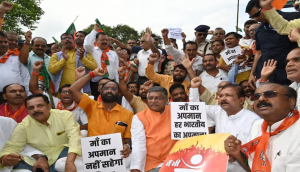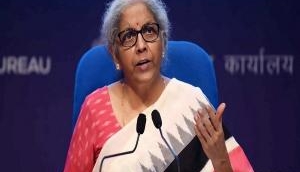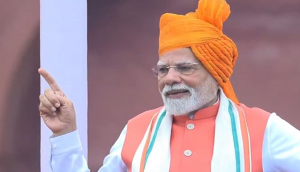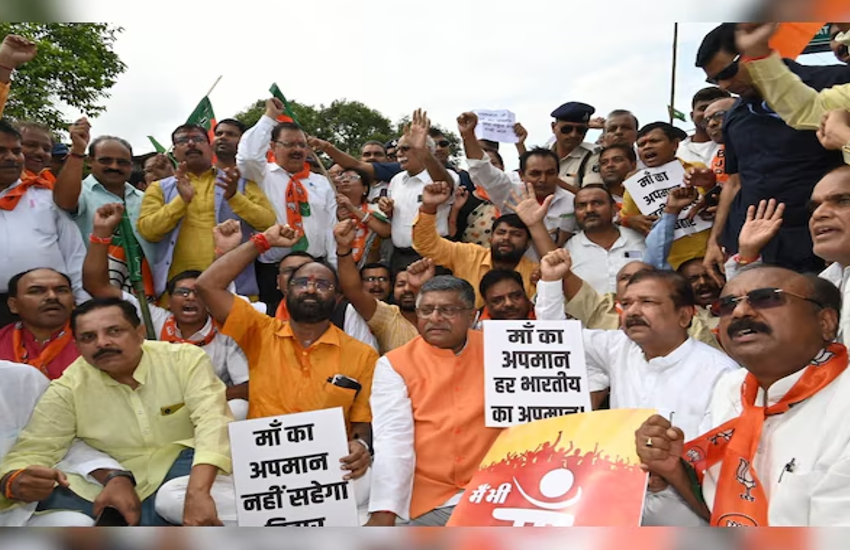_68630_730x419-m.jpg)
With the stage set for the midnight rollout of the much-awaited Goods and Services Tax (GST), Finance Minister Arun Jaitley said that although India was earlier 'economically fargemented', new India under the new tax regime will transform into 'One Tax, One Market, One Nation'.
Delivering the opening address at the special session of Parliament here, Jaitley while lauding the efforts of the GST council and those involved said GST is "an achievement for the whole country."
"With the nation being transformed into a single-tax market, India's GDP will grow and it will greatly benefit the common man as rates have been made cheaper. This is the most ambitious economic reform India has seen. India has shown a true sense of cooperative federalism by helping in achieving a broader consensus," he said.
Speaking on the benefits of the GST, Jaitley said with a single-taxation flow, tax avoidance can be easily curbed, adding that no unnecessary burden would be imposed on the weaker strata of society.
Jaitley further said with the Centre and State Governments working together, revenue collection can also be balanced.
"I would like to take this opportunity to thank all those who have worked towards making this day a success," added Jaitley.
The most anticipated tax reform for the Indian economy will be rolled out from midnight tonight from the historic Central Hall of Parliament.
The biggest tax reform since independence - GST - will pave the way for realisation of the goal of One Nation - One Tax - One Market.
Ahead of the launch, the Parliament was in all its glory on Friday evening with its main building decked with rows of bright bulbs and people taking to streets to celebrate. It is only the fourth time in the history of Independent India that a midnight function is being organised in the Central Hall of Parliament.
The GST is expected to benefit all the stakeholders namely industry, government and consumer as it will lower the cost of goods and services give a boost to the economy and make the products and services globally competitive, giving a major boost to 'Make in India' initiative.
Under the GST regime, exports will be zero-rated in entirety unlike the present system where refund of some of the taxes does not take place due to fragmented nature of indirect taxes between the Centre and the States.
However, GST will make India a common market with common tax rates and procedures and remove economic barriers. GST is largely technology driven and will reduce the human interface to a great extent. GST is expected to improve ease of doing business in India.
In majority of supplies of goods, the tax incidence approved by the GST Council is much lower than the present combined indirect tax rates levied [on account of central excise duty rates / embedded central excise duty rates / service tax post-clearance embedding, VAT rates or weighted average VAT rates, cascading of VAT over excise duty and tax incidence on account of CST, Octroi, Entry Tax, etc.] by the Centre and State(s).
On March 29 this year, the Finance Minister of India tabled four GST Bills for consideration and passage in the Lok Sabha namely The Central Goods and Services Tax (CGST) Bill, 2017, The Integrated Goods and Services Tax (IGST) Bill, 2017, The Union Territories Goods and Services Tax (UTGST) Bill, 2017 and the GST (Compensation to States) Bill, 2017.
They were passed by the Lok Sabha on March29, 2017 and by the Rajya Sabha on 6 April, 2017.
The GST Council has decided the final structure of GST as follows:
• The threshold limit for exemption from levy of GST is Rs. 20 lakh for the States except for the Special Category, where it is Rs 10 Lakh.
• A four slab tax rate structure of 5 percent, 12 percent, 18 percent and 28 percent has been adopted for GST.
• A cess would be levied on certain goods such as luxury cars, aerated drinks, and pan masala and tobacco products, over and above the GST rate of 28 percent for payment of compensation to the states.
• The threshold for availing the Composition scheme is Rs. 75 lakhexcept for special category States where it is Rs. 50 lakh and they are required to file quarterly returns only. Certain categories of manufacturers, service providers (except restaurants) are out of the Composition Scheme.
Other important Features of GST are:-
· GST envisages all transactions and processes to be done only through electronic mode, to achieve non-intrusive administration. This will minimise tax payer's physical interaction with the tax officials.
· GST provides for the facility of auto-populated monthly returns and annual return.
· It also facilitates the taxpayers by prescribing grant of refund within 60 days, and provisional release of 90 percent refund to exporters within 7 days.
Further facilitation measures include interest payment if refund is not sanctioned in time, and refund to be directly credited to bank accounts.
· Comprehensive transitional provisions for ensuring smooth transition of existing taxpayers to GST regime, credit for available stocks, etc.
· Other provisions
include system of GST Compliance Rating, etc.
· Anti-profiteering provisions for protection of consumer rights.
-ANI







![BJP's Kapil Mishra recreates Shankar Mahadevan’s ‘Breathless’ song to highlight Delhi pollution [WATCH] BJP's Kapil Mishra recreates Shankar Mahadevan’s ‘Breathless’ song to highlight Delhi pollution [WATCH]](https://images.catchnews.com/upload/2022/11/03/kapil-mishra_240884_300x172.png)

![Anupam Kher shares pictures of his toned body on 67th birthday [MUST SEE] Anupam Kher shares pictures of his toned body on 67th birthday [MUST SEE]](https://images.catchnews.com/upload/2022/03/07/Anupam_kher_231145_300x172.jpg)






